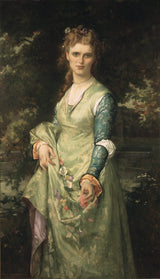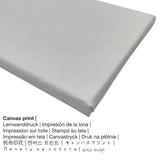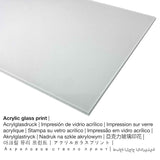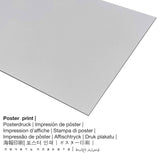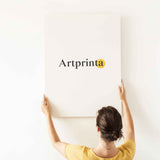Alexandre Cabanel, 1873 - Christina Nilsson, 1843-1921, onye na-agụ opera, dị ka Ophelia - ọmarịcha nka.
Ụtụ gụnyere. Mbupu gbakọrọ na ndenye ọpụpụ.
Nkọwa ihe osise izizi sitere na webụsaịtị ihe ngosi nka (© Nwebiisinka - nke Nationalmuseum Stockholm - National Museum nke Stockholm)
English: Christina Nilsson (1843–1921) came from modest circumstances in the province of Småland, in southern Sweden. She moved to Paris, triumphed as an opera-singer and toured all over the world. She was also an avid art collector and bequeathed more than 200 objects to the Nationalmuseum. The opera star’s collection was typical of a person of her standing, as was her different homes, which she decorated herself. Her collection was disparate, comprising both modern works of art and objects from various historical eras. Her terse parlours were dominated by religious pictures and objects from the Middle Ages and the Baroque. More intimate salons were decorated in the Rococo style, with 18th century paintings and porcelain figurines. Modern art was shown alongside works from earlier periods. The Swedish soprano Christina Nilsson was legendary for her rendering of Ophelia in Ambroise Thomas’ opera Hamlet from 1868. The part was a difficult one. She met with success in Paris and then toured Europe and America. This portrait shows the star in the most famous scene from the opera, where Ophelia drowns herself after her passionate aria. The artist Alexandre Cabanel was famous for his historical, biblical and mythological subjects in an idealized, elegant style. He was also a highly-appreciated portrait artist who was often requested to paint celebrities. Christina Nilsson (1843–1921) kom från enkla förhållanden i Småland. Hon bosatte sig i Paris, gjorde succé som operasångerska och turnerade världen runt. Hon var även en stor konstsamlare och testamenterade över 200 föremål till Nationalmuseum. Operastjärnans samling och de bostäder hon inredde åt sig själv var typiska för en person i hennes ställning. Det var en brokig samling med både moderna konstverk och föremål från olika historiska epoker. I strama sällskapsrum dominerade religiösa motiv och föremål från medeltiden och barocken. Intimare salonger var inredda i rokoko med 1700-talsmåleri och porslinsfiguriner. Modern konst var oproblematiskt placerad sida vid sida med den äldre. Christina Nilssons mest hyllade roll var Ofelia i Ambroise Thomas opera Hamlet 1868. Rollen var mycket krävande. Den svenska sopranen gjorde succé i Paris och turnerade sedan i Europa och Amerika. Porträttet föreställer stjärnan i operans mest kända scen där Ofelia efter en gripande aria dränker sig. Konstnären Alexandre Cabanel var känd för historiska, bibliska och mytologiska motiv utförda i en förskönande och elegant stil. Han var även en mycket uppskattad porträttmålare – ofta anlitad av tidens celebriteter.
Nkọwa ngwaahịa nka
The more than 140 years old artpiece was made by Alexandre Cabanel. Emere izizi ya na nha: Ogologo: 153 cm (60,2 ″); Ogologo: 90 cm (35,4 ″). Mmanụ na kwaaji was used by the painter as the medium of the artwork. Nowadays, this artwork can be viewed in in the National Museum nke Stockholm collection, which is Sweden's museum of art and design, a Swedish government authority with a mandatet o preserve cultural heritage and promote art, interest in art and knowledge of art. We are pleased to mention that the ngalaba ọha a na-enye mpempe nka site n'ikike nke Nationalmuseum Stockholm na Wikimedia Commons.The creditline of the artpiece is the following: . On top of that, alignment is portrait with a side ratio of 9: 16, which means that the length is 45% shorter than the width. Alexandre Cabanel was a painter, university teacher, whose art style can be classified as Realism. The painter lived for 66 afọ a mụrụ ya n'afọ 1823 na Montpellier, Occitanie, France wee nwụọ na 1889.
Ihe ndị ahịa anyị nwere ike isi na ya nweta
In the product dropdown lists you can pick a material and a size of your choice. Pick your favorite size and material among the following options:
- Kwaaji: A canvas print is a printed canvas mounted on a wooden stretcher. A canvas produces the extra impression of three-dimensionality. Canvas prints are relatively low in weight, which implies that it is easy and straightforward to hang the Canvas print without additional wall-mounts. Hence, a canvas print is suitable for all types of walls.
- Mbipụta enyo acrylic: The print on acrylic glass, often referred to as a print on plexiglass, will change the artwork into brilliant wall decoration and is a great alternative to aluminium and canvas fine art replicas. With an acrylic glass art print contrasts plus small color details will be visible due to the very fine gradation.
- Mpempe akwụkwọ (ihe kwaaji): Our poster print is a printed sheet of flat canvas with a slight finish on the surface. It is perfectly appropriate for framing your art copy with the help of a special frame. Please keep in mind, that depending on the absolute size of the poster we add a white margin of approximately 2-6cm round about the work of art, which facilitates the framing with your custom frame.
- Aluminom ihe eji eme ihe: Aluminium Dibond prints are prints on metal with an impressive depth effect. The Direct Print on Aluminum Dibond is your best introduction to the sophisticated world of fine art prints manufactured on aluminum. The colors of the print are bright and vivid in the highest definition, the fine details appear very clear.
Tebụl nchịkọta ihe nkiri
| aha: | Alexandre Cabanel |
| Aha ndị ọzọ: | Cabanel Alexandre, Cabanel, Alexandre Cabanel, a. cabanel, alex cabanel, Cabanel Alexander |
| okike nke onye nka: | nwoke |
| Obodo onye nka: | French |
| Ọrụ nke onye na-ese ihe: | onye na-ese ihe, onye nkuzi mahadum |
| Obodo onye nka: | France |
| Otu nka: | omenkà nke oge a |
| styles: | Ihe ngosi |
| Nwụrụ na afọ nke: | 66 afọ |
| Afọ ọmụmụ: | 1823 |
| Amụrụ na (ebe): | Montpellier, Occitanie, France |
| Afọ ọnwụ: | 1889 |
| Nwụrụ na (ebe): | Paris, Ile-de-France, France |
Nkọwa gbasara nka nka pụrụ iche
| Aha nka nka: | "Christina Nilsson, 1843-1921, opera singer, as Ophelia" |
| nhazi ọkwa: | sere |
| Nhazi nka: | nkà nke oge a |
| oge: | 19th narị afọ |
| Afọ nka: | 1873 |
| Afọ nka: | 140 afọ |
| Agba na: | mmanụ na kwaaji |
| Akụkụ nke nka nka izizi: | Ogologo: 153 cm (60,2 ″); Ogologo: 90 cm (35,4 ″) |
| Egosiputara na: | National Museum nke Stockholm |
| Ebe ngosi nka: | Stockholm, Obodo Stockholm, Sweden |
| E Nwere na: | www.nationalmuseum.se |
| Ikikere nke ihe osise: | ngalaba ọha |
| Site n'aka: | Nationalmuseum Stockholm na Wikimedia Commons |
Nkọwa ngwaahịa ahaziri ahazi
| Bipụta ụdị ngwaahịa: | nka nka |
| Usoro mmeghari: | dijitalụ mmeputakwa |
| Usoro mmepụta: | Mbipụta UV ozugbo (mbipụta dijitalụ) |
| Nlụpụta: | German mere |
| Stockdị ngwaahịa: | a na-achọ |
| Eji ngwaahịa a chọrọ: | imewe ụlọ, mgbidi gallery |
| Ndepụta: | nhazi ihe osise |
| Njikwa oyiyi: | 9:16- (ogologo: obosara) |
| Ntụgharị nkọwa akụkụ onyonyo: | ogologo bụ 45% mkpụmkpụ karịa obosara |
| Nhọrọ ihe dị: | akwụkwọ mmado (akwụkwọ kwaaji), mbipụta ọla (aluminium dibond), mbipụta iko acrylic (nke nwere ezigbo mkpuchi iko), mbipụta akwụkwọ. |
| Canvas dị n'elu ihe nrịbama (mbipụta kanvas) nha dị iche iche: | 50x90cm - 20x35", 100x180cm - 39x71" |
| Mpempe iko acrylic (nwere ezigbo mkpuchi iko) nha dị iche iche: | 50x90cm - 20x35", 100x180cm - 39x71" |
| Mpempe akwụkwọ mmado (akwụkwọ kwaaji) nha dị iche iche: | 50x90cm - 20x35" |
| Nhọrọ nha nha nke aluminom dibond (ihe aluminom): | 50x90cm - 20x35" |
| Nhazi nke nnomi nka: | agunyeghi |
Nkwupụta iwu: We try whatever we can to depict our products as accurate as possible and to demonstrate them visually in our shop. Please keep in mind that some colors of the print products and the printing may differ slightly from the image on your device's screen. Depending on your screen settings and the condition of the surface, colors might not be printed as realisitcally as the digital version on this website. Bearing in mind that our art reproductions are processed and printed by hand, there may as well be minor differences in the motif's size and exact position.
Nwebiisinka © - www.artprinta.com (Artprinta)

